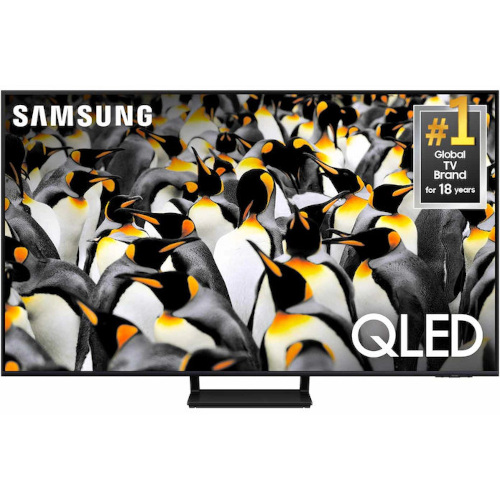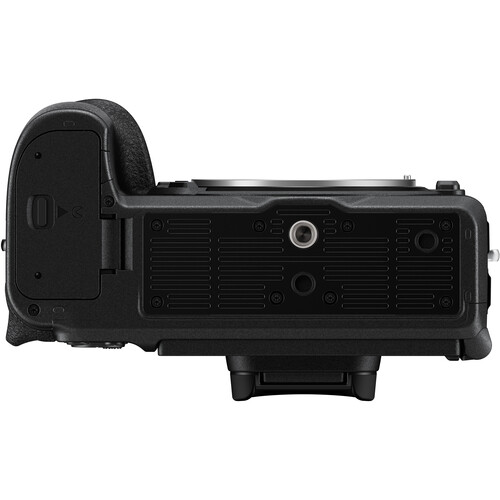Nikon Z6 IIISpecs
| Lens Mount |
Nikon Z
|
| Sensor Resolution |
Actual: 26.79 Megapixel
Effective: 24.5 Megapixel (6048 x 4032) |
| Image Sensor |
35.9 x 23.9 mm (Full-Frame) Partially Stacked CMOS
|
| Image Stabilization |
Sensor-Shift, 5-Axis
|
| ISO Sensitivity Range |
Photo
100 to 64,000 (Extended: 50 to 204,800) Video 100 to 51,200 |
| Internal Recording Modes |
ProRes RAW/ProRes RAW HQ/Raw
6048 x 3404 at 23.98/25/29.97/50/59.94 fps 4032 x 2268 at 23.98/25/29.97/50/59.94 fps 3984 x 2240 at 23.98/25/29.97/50/59.94/100/120 fps H.264/H.265 8/10-Bit 5376 x 3024 at 23.98/25/29.97/50/59.94 fps UHD 4K (3840 x 2160) at 23.98/25/29.97/50/59.94/100/120 fps 1920 x 1080 at 23.98/25/29.97/50/59.94/100/120/200/240 fps |
| External Recording Modes |
HDMI
UHD 4K (3840 x 2160) |
| Media/Memory Card Slot |
Slot 1: CFexpress Type B / XQD
Slot 2: SD/SDHC/SDXC (UHS-II) |
| Video I/O |
1x HDMI Output
|
| Audio I/O |
1x 1/8″ / 3.5 mm TRS Stereo Headphone Output
1x 1/8″ / 3.5 mm TRS Stereo Microphone Input |
| Power I/O |
1x USB-C Input
|
| Other I/O |
1x USB-C Data Output (Shared with Power Input)
1x Nikon DC2 Data Input |
| Wireless |
2.4 / 5 GHz Wi-Fi 5 (802.11ac), Bluetooth 5.0
|
| Display Type |
Articulating Touchscreen LCD
|
| Battery Type |
1x EN-EL15c Rechargeable Lithium-Ion (Approx. 360 Shots)
|
Imaging
| Lens Mount |
Nikon Z
|
| Sensor Resolution |
Actual: 26.79 Megapixel
Effective: 24.5 Megapixel (6048 x 4032) |
| Image Sensor |
35.9 x 23.9 mm (Full-Frame) Partially Stacked CMOS
|
| Sensor Crop (35mm Equivalent) |
Crop Factor: 1x
*Additional Crop Occurs in Select Video Modes |
| Image Stabilization |
Sensor-Shift, 5-Axis
|
| Built-In ND Filter |
No
|
| Capture Type |
Stills & Video
|
Exposure Control
| Shutter Type |
Mechanical Focal Plane Shutter and Electronic Rolling Shutter
|
| Shutter Speed |
Mechanical Shutter
1/8000 to 15 Minutes Electronic Shutter 1/16000 to 15 Minutes |
| Bulb/Time Mode |
Bulb & Time Mode
|
| ISO Sensitivity Range |
Photo
100 to 64,000 (Extended: 50 to 204,800) Video 100 to 51,200 |
| Metering Method |
Center-Weighted Average, Highlight Weighted, Matrix, Spot
|
| Exposure Modes |
Aperture Priority, Auto, Manual, Program, Shutter Priority
|
| Exposure Compensation |
-5 to +5 EV (1/3, 1/2 EV Steps)
|
| Metering Range |
-4 to 17 EV
|
| White Balance |
2500 to 10,000K
Presets: Auto, Cloudy, Color Temperature, Direct Sunlight, Flash, Fluorescent, Incandescent, Shade |
| Continuous Shooting |
Up to 20 fps at Maximum Resolution
|
| Interval Recording |
Yes
|
| Self-Timer |
2/5/10/20-Second Delay
|
Still Image Capture
| Aspect Ratio |
1:1, 3:2, 16:9
|
| Image File Format |
HEIF, JPEG, Raw
|
| Bit Depth |
14-Bit
|
Video Capture
| Internal Recording Modes |
ProRes RAW/ProRes RAW HQ/Raw
6048 x 3404 at 23.98/25/29.97/50/59.94 fps 4032 x 2268 at 23.98/25/29.97/50/59.94 fps 3984 x 2240 at 23.98/25/29.97/50/59.94/100/120 fps H.264/H.265 8/10-Bit 5376 x 3024 at 23.98/25/29.97/50/59.94 fps UHD 4K (3840 x 2160) at 23.98/25/29.97/50/59.94/100/120 fps 1920 x 1080 at 23.98/25/29.97/50/59.94/100/120/200/240 fps |
| External Recording Modes |
HDMI
UHD 4K (3840 x 2160) |
| Fast-/Slow-Motion Support |
Slow-Motion Only
|
| Gamma Curve |
HDR-HLG, Nikon N-Log
|
| Recording Limit |
Up to 125 Minutes
|
| IP Streaming |
No
|
| Built-In Microphone |
Stereo
|
| Audio Recording |
16-Bit 48 kHz AAC Audio
2-Channel 24-Bit 48 kHz LPCM Audio |
Interface
| Media/Memory Card Slot |
Slot 1: CFexpress Type B / XQD
Slot 2: SD/SDHC/SDXC (UHS-II) |
| Video I/O |
1x HDMI Output
|
| Audio I/O |
1x 1/8″ / 3.5 mm TRS Stereo Headphone Output
1x 1/8″ / 3.5 mm TRS Stereo Microphone Input |
| Power I/O |
1x USB-C Input
|
| Other I/O |
1x USB-C Data Output (Shared with Power Input)
1x Nikon DC2 Data Input |
| Wireless |
2.4 / 5 GHz Wi-Fi 5 (802.11ac), Bluetooth 5.0
|
| Mobile App Compatible |
Yes: Android & iOS
App Name: Nikon Imaging Cloud Functionality: Access Stored Files, Firmware Update |
| Global Positioning (GPS, GLONASS, etc.) |
GPS
*Via Connected Smartphone |
Monitor
| Display Size |
3.2″
|
| Resolution |
2,100,000 Dot
|
| Display Type |
Articulating Touchscreen LCD
|
| Secondary Display |
Top: Status Display
|
Viewfinder
| Type |
Built-In Electronic
|
| Size |
0.5″
|
| Resolution |
5,760,000 Dot
|
| Eye Point |
21 mm
|
| Coverage |
100%
|
| Magnification |
Approx. 0.8x
|
| Diopter Adjustment |
-4 to +2
|
Focus
| Focus Type |
Auto and Manual Focus
|
| Focus Mode |
Continuous-Servo AF, Full-Time Servo, Manual Focus, Single-Servo AF
|
| Autofocus Points |
Photo, Video
Contrast Detection, Phase Detection: 299 |
| Autofocus Sensitivity |
-10 to +18 EV
|
Flash
| Built-In Flash/Light |
No
|
| Flash Modes |
First-Curtain Sync, Off, Rear Curtain/Slow Sync, Rear Sync, Red-Eye Reduction, Slow Sync, Slow Sync/Red-Eye Reduction
|
| Maximum Sync Speed |
1/200 Second
|
| Flash Compensation |
-3 to +1 EV (1/3, 1/2 EV Steps)
|
| Dedicated Flash System |
TTL
|
| External Flash Connection |
Shoe Mount
|
General
| Battery Type |
1x EN-EL15c Rechargeable Lithium-Ion (Approx. 360 Shots)
|
| Shoe Mount |
1x Hot Shoe
|
| Tripod Mounting Thread |
1x 1/4″-20 Female (Bottom)
|
| Material of Construction |
Magnesium Alloy
|
| Operating Conditions |
32 to 104°F / 0 to 40°C up to 85% Humidity
|
| Dimensions (W x H x D) |
5.5 x 4 x 2.9″ / 138.5 x 101.5 x 74 mm
|
| Weight |
23.6 oz / 670 g (Body Only)
|
Packaging Info
| Package Weight |
2.865 lb
|
| Box Dimensions (LxWxH) |
9.5 x 7.9 x 5.3″
|
Nikon Z6 III Overview
Nikon Z6 III Mirrorless Camera unlocks a number of flagship-level upgrades for this mid-range camera, including faster and more precise autofocus, professional-level 6K internal raw video, pre-capture at up to 120 fps, and a smooth, bright, colorful EVF. Taken together, these upgrades make this mirrorless monster an ideal choice for aspiring professionals in search of an all-around, affordable camera.
Newly Designed Sensor and Flagship Processing

Nikon Z6 III Mirrorless Camera
24.5MP Partially-Stacked CMOS Sensor
The Z6 III is Nikon’s first camera to to feature a partially stacked sensor design for faster scans and readouts than its predecessor, as well as reducing rolling shutter. Additionally, this sensor design unlocks many of the flagship-level features in the camera, like faster autofocus, a smoother EVF experience, faster continuous shooting speeds, and higher frame rates when shooting video.
EXPEED 7 Image Processor
Complementing the sensor is the EXPEED 7 processing engine, found in the top-of-the-line Z8 and Z9 mirrorless cameras an which offers speeds approximately 10x faster than the Z6II. This engine works in conjunction with the partially-stacked sensor design to realize impressively fast AF speeds, burst shooting rates, a high buffer capacity, fluid video performance, and quick all-around handling.
- Top continuous shooting speeds of 20 fps when shooting in raw, up to 60 fps when shooting in full-frame JPEG, and 120 fps when shooting JPEGs using a DX crop, with all rates supporting full AF/AE performance.
- Able to buffer over 1000 images in a burst when using the electronic shutter, meaning image sequences can be recorded for approximately 50 seconds continuously.
- Pre-Release Capture at up to 120 fps helps make decisive moment shots easier by recording frames in a burst for up to a second prior to actually releasing the shutter. When this feature is activated, burst shooting will commence when the shutter is half-pressed and the buffer will retain up to 4 seconds’ worth of frames after fully pressing the shutter.
- Electronic shutter affords a top shutter speed of 1/16,000 sec for working in the brightest conditions with wider apertures.
- Partially-stacked sensor design reduces rolling shutter distortion so fast-moving subjects, like a golf club, tennis racket, or baseball bat, do not appear distorted when working with shutter speeds up to 1/16,000 sec.
- AF calculations are done at a 120 fps rate to keep up with fast continuous shooting speeds.
Fast and Intelligent AF
493-Point Phase-Detection AF
Covering the full sensor area, the Z6 III’s flagship EXPEED 7 processor unlocks Nikon’s 299-point phase-detection AF system to realize fast and accurate focusing performance. This system is benefitted by the high-speed communication of the Z interface along with the speed of the sensor that enables AF readings to occur at up to 120 fps.
This focusing system also supports working in low-light conditions with a Starlight mode that permits focusing down to -10 EV to greatly benefit astrophotography, concert, and other nighttime shooting applications. Featuring the highest native ISO in a Z-series camera at ISO 64000, the autofocus is also useful for working in difficult lighting conditions. The Backlit AF function uses separate pixels on the sensor that allows these areas to intentionally overexpose for focusing accuracy purposes without impacting the actual exposure of the recorded image.
A mainstay focusing mode in DSLRs, which debuted for mirrorless with the Z9, the Z6 III also includes 3D Tracking AF that pairs with subject detection to lock onto fast, erratically moving subjects that move parallel and perpendicular to the camera. Additionally, there are three Dynamic-Area AF modes, with a range of focus area sizes, for capturing a broad variety of moving subject types.
Subject Detection with Deep Learning Technology
Utilizing inherited algorithms and deep learning technology from the Z9, including sophisticated Subject Detection, the Z6 III can recognize a variety of distinct subject types, ranging from humans to animals to airplanes to bicycles. When working in Auto-Area AF, these subjects will automatically be detected, focused on, and tracked to ensure sharp focus when the subject is moving across the frame.
Eye-Detection AF, specifically, has been tuned for improved accuracy and refined recognition of eyes in the scene and can also be used in conjunction with custom Wide-Area AF for different subject shapes and sizes.
Nikon Z6 III Mirrorless Camera More Beautiful Portraits
Perfect for portraits, the Z6 III improves on the partially-stacked sensor’s inherent capabilities with a series of processing tools and shooting functions to improve portraits:
- Portrait mode processes portraits for skin with natural texture and a rounded feel
- Rich Tone Portrait mode, a picture mode that produces more vivid results while capturing details of the subject’s complexion and avoiding loss of detail in the highlights
- Flat Monochrome mode features gentle gradations from highlights to shadows, producing soft monochrome portraits
- Deep Tone Monochrome mode chooses slightly darker tones in the range from shadows to mid-tones, with brightness rapidly increasing as tones progress from mid-tones to highlights
- Skin softening can be used on up to three subjects in a shot and slightly blurs the skin for a more pleasing texture while still retaining essential sharpness on eyes and hair
- Manual white balance control is more intuitive when making adjustments and Auto WB has also been optimized for human subjects
- Take full advantage of Nikon’s portrait modes by pairing the Z6 III with one of Nikon’s portrait Z lenses, like the 50mm f/1.2 S, the 85mm f/1.2 S, or the 135mm f/1.8 S Plena
Nikon Z6 III Mirrorless Camera Pixel Shift Technology
Produce ultra-high resolution images at up to approximately 96 megapixels using pixel shift technology. By slightly shifting the image sensor between shots – selectable between 4 and 32 shots per image, with more shots meaning more detail – users can merge the images in NX Studio after shooting to create a single image with enhanced resolution, texture, and color. The shooting method also also reduces noise, moiré, and false colors. Pixel Shift photography benefits archival, landscape, architecture, fine art, macro, and film digitizing applications, and achieves its best results when working with a tripod

 Sony Bravia
Sony Bravia Samsung
Samsung LG Television
LG Television Hamim
Hamim Xiaomi Television
Xiaomi Television Haier
Haier Hisense
Hisense JVCO
JVCO Gree
Gree General
General Hisense AC
Hisense AC Midea AC
Midea AC Viomi AC
Viomi AC![Walton Air Conditioner WSI-INVERNA (SUPERSAVER)-12F [PLASMA]](https://orient-electronics.com/wp-content/uploads/2024/04/channels4_profile-150x150.jpg) Walton
Walton Canon
Canon Sony Camera
Sony Camera Fujifilm
Fujifilm Lowepro
Lowepro Nikon
Nikon USE Camera Lens
USE Camera Lens Danaaz
Danaaz Samsung Refrigerator
Samsung Refrigerator Hitachi
Hitachi Samsung
Samsung Sony
Sony Electronic Gadgets
Electronic Gadgets Kettles
Kettles Fan
Fan D-Link
D-Link



















Reviews
Clear filtersThere are no reviews yet.